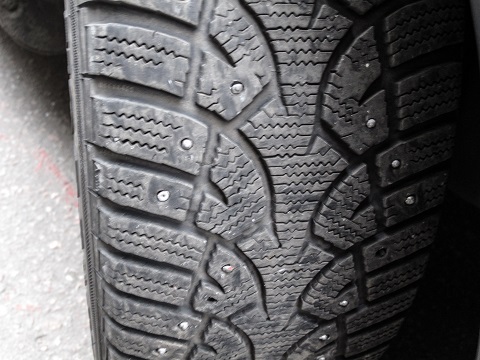
As the winter season creeps closer, you may question whether to spend your money on getting winter tires. If you live in an area of Utah that only gets a touch of winter weather, a good set of all-season tires will likely do the trick. If you live in a part of the state where you’ll have to battle driving in the snow regularly, a good winter tire can mean the difference between staying in control on snow-covered roads and getting stuck.
This comprehensive guide from the team at Bountiful Mazda provides an in-depth look at what snow tires are and why they make a difference.
What Makes Winter Tires Different?
So, what exactly are winter tires? Winter tires differ from other tires because their special rubber compound stays flexible even when the temperature drops. Specific factors enable them to provide the best possible grip in winter conditions:
Tread Rubber
Winter tires contain a rubber compound that remains flexible at low temperatures. This allows more of the tire to come into contact with the road surface, which gives you more grip. The rubber of all-season and summer tires stiffens in colder weather, resulting in a loss of traction.
Tread Pattern
The tread pattern on winter tires is different than on all-season tires. The tread is also deeper to help reduce snow buildup and provide better traction. The unique tread patterns effectively expel water and channel snow and slush.
Biting Edges
Winter tire treads feature sipes, which are tiny slits on the surface that create additional biting edges. This design increases the tire’s traction on ice.
Is There a Difference Between Winter Tires and Snow Tires?
People in Salt Lake City may use these descriptions interchangeably. Whether you use the term winter or snow often depends on where you live. Regardless of their name, the design of these tires ensures that they provide better traction in temperatures below 40 degrees Fahrenheit. The expression snow tire is misleading because they perform in all winter conditions, including ice and subfreezing temperatures.
Do I Need Four Winter Tires, or Are Two Enough?
Whether your vehicle is all-wheel or two-wheel drive, getting good winter tires is an important element of regular car maintenance. Your best bet for maximum traction is to have four winter tires. While some drivers in Bountiful question having a winter tire on all wheel positions, having just two means you won’t have the same amount of traction and stopping power as you would with four. If you only mount winter tires on the front axle, you risk losing traction in the rear when taking corners on wintry roads. If you lose traction in the rear, it could throw you into a rear-wheel skid.
You should have four winter tires even if you have a rear-wheel-drive vehicle. Keep in mind that the front wheels do the steering in a rear-wheel-drive vehicle, while the rear wheels provide the power. If the rear tires can grip the road, but the front tires slip, you won’t be able to steer the vehicle in the direction you want the front wheels to go.
Will All-Season Tires Work in the Winter?
All-season tires perform well in various conditions, including a small amount of snow. However, they are still made with a stiffer rubber compound because they also need to perform during the warmer months. The tread on an all-season tire moves water rather than snow away to help prevent hydroplaning. The bottom line is a brand-new set of all-season tires still won’t work as well in cold weather as a set of winter tires.
Do All-Wheel Drive Vehicles Need Winter Tires?
One common misconception is that vehicles with all-wheel or four-wheel drive don’t need winter tires because they have the grip of all four wheels. While all-wheel drive can help you if you’re behind a snow bank in a parking lot or have to tackle an unplowed road, they are not any better than a two-wheel-drive vehicle when you have to turn or brake on snow and ice. Even if you have the power of all four wheels, winter tires will provide up to 50% more traction than all-season tires.
What To Look For When Buying Winter Tires
When purchasing winter tires in Bountiful, Salt Lake City, the first thing you should look for is the winter tire icon, a stamp featuring three mountain peaks on the tire’s sidewall. This indicates that it complies with the U.S. Department of Transportation’s safety standards. All the big tire companies offer a line of winter tires, but some specialize in them. Some auto manufacturers recommend a specific model of winter tire, making it easier to select the one you need. If your vehicle doesn’t have a particular recommendation, we’ll help you find the best tires to get you through the winter.
When Should I Put Winter Tires On?
The best time to mount your winter tires is before the winter weather hits. When the temperature drops below 45 degrees, you should arrange for the installation. By changing the earlier rather than later, you won’t have to rush or take the risk of driving without them in winter conditions. Don’t forget to switch back to your summer or all-season tires at the end of the winter season.
Are You Ready for Winter Driving?
Now is the time to start thinking about getting your winter tires, and the service center at Bountiful Mazda has the tires you need to keep you safe throughout winter. Stop by or give us a call, and we’ll help you find the right tires for your vehicle and mount them before the winter weather hits.


